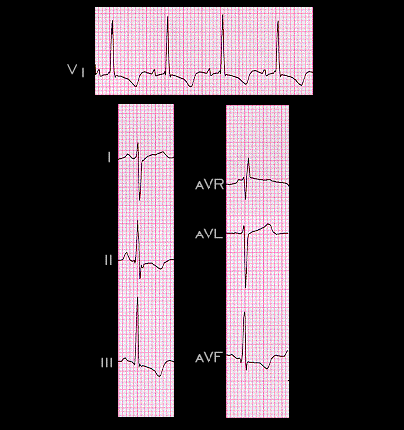
The rate is 100 per minutes. This is obtained by dividing 60 seconds per minute by the R-R interval (0.6 seconds). The rhythm, as determined by the presence and morphology of the P waves, and the relationship of the P waves to the QRS complexes, is sinus. The PR interval is 0.12 second, the QRS duration is 0.08 seconds and the QT interval is 0.34 seconds (360 ms). These values are all normal. Now focus on the frontal plane leads shown here to determine the P, QRS and T wave axes.
